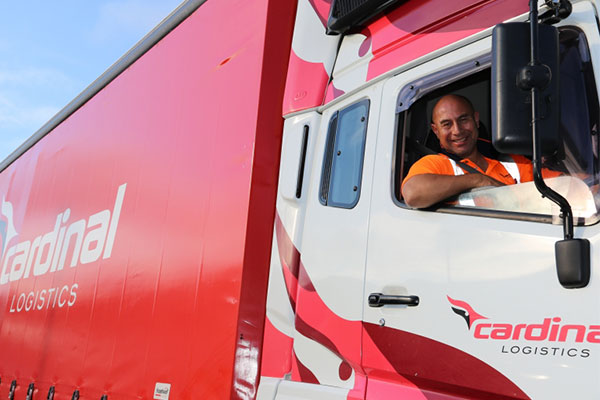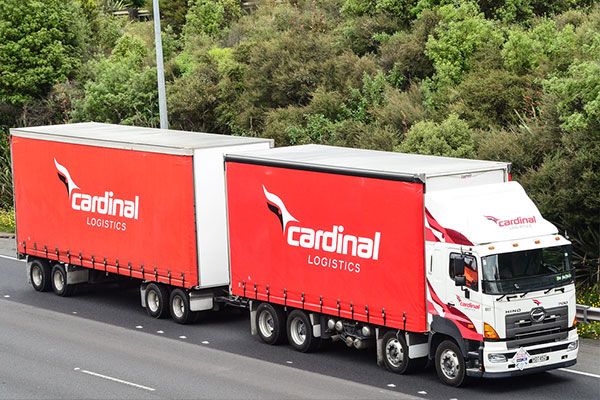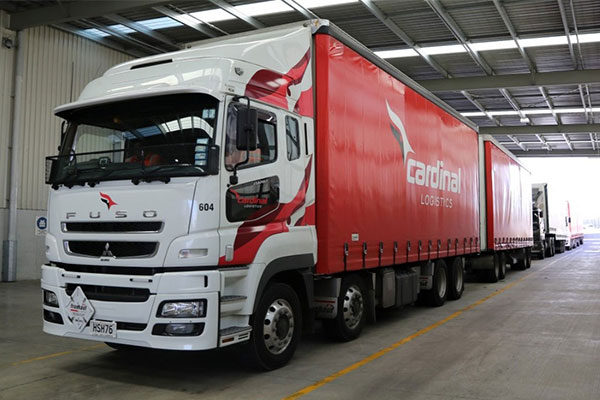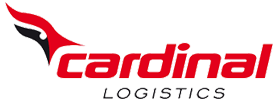Most Improved Player
Most Improved Player
After identifying a need for change and raising driver safety awareness, this leading logistics company is now top of the Leaderboards as well.
Founded in 1992, Cardinal Logistics specialises in distribution and storage solutions, with a focus on groceries and other fast-moving consumer goods. Cardinal currently operates out of three Auckland warehouses, one in Christchurch, and satellite locations in Tauranga and Palmerston North. With 450 staff and an 180,000-pallet capacity across sites, their customers include Griffins, Unilever, Sealord, Vitasoy, General Mills, Red Bull, API, Hutchinson’s, and Wilsons.
Transport manager Shaun Reed is responsible for ensuring that their Auckland trucks are loaded correctly and that all deliveries are completed on time. This involves overseeing a fleet of 35 vehicles and team of forklift drivers, freight checkers, dispatchers, and truck drivers.
When Shaun came on board in 2019,they were already using EROAD but “mainly as a GPS tracking device rather than a driver behaviour device.” It wasn’t until he and national transport manager Leonard Griessel took a closer look at the EROAD data analytics that they noticed plenty of room for improvement.
“We were in the bottom 50% of the industry, which is a pretty poor reflection on our brand, so we realised we needed to create some change there,” Shaun admits. “It was a culture where drivers thought it was normal to have speeding events.”
Rejigging the Company Culture
To change this mindset and bring speeding events way down, they implemented a weekly bonus programme and hosted a training day shortly after that, going over safety protocols and showing the drivers their EROAD stats, including speeding and idling at the group and individual level.
“It was the first time the drivers had actually seen that, the visual statistics and data. Once they did, it definitely started to kick in.”
They established a benchmark that drivers should aim for each week, failing which they would forfeit their weekly bonus. Because the drivers were obviously keen to receive that bonus, the weekly posting of results lit a fire under them and drove healthy competition.
“We never saw it in a negative light because we didn’t portray it as a means to discipline drivers unless it was really excessive and ongoing,” Shaun says. “It was more a tool for them to track their progress. The benchmark we set was quite clear and quite achievable.”
While in most cases, it was just a matter of awareness and pointing out “hot spots” where posted speeds change suddenly, they did have their share of lead-footed drivers: “No one really talked to them about how often they were speeding, when they were speeding, and how excessive some of the events were, so drivers never really saw it as an issue.”
When they first began, the benchmark was no more than 100 overspeeds per driver per week, which, at the time, seemed a difficult target for many. “Now we’re actually doing under 20. The norm is about 20, 25, and the number of complaints we’ve had from the public has gone down a lot . We’re definitely having fewer incidents on the road and less severe incidents as well.”
And rather than being policed, drivers are taking it upon themselves to do better: “I was talking to a driver the other day whose rating had dropped because he’s been so busy, and he was really disappointed in himself that he let that happen. So they’re taking more accountability and also gamifying it a bit.”
Despite having several older drivers they expected might be reluctant to change, the team adapted to EROAD and the new safety culture without much difficulty. “As soon as they got used to the technology, they were really for it. The feedback from our drivers has been really, really positive.”

Loads of Useful Features
Shaun says his drivers appreciate the convenience of EROAD’s logbook as well as Drive Buddy. “Actually having a display of the speed limit, I’ve had comments they’ve been finding that very, very useful.” Being able to see who’s doing what at any given time thanks to Driver ID Login has also proven beneficial for customer service and communicating with drivers in the field.
Yet another feature that comes in handy on a daily basis is EROAD Inspect, which streamlines pre-and post-trip vehicle inspections and allows drivers to quickly capture defects or any maintenance needed – and even submit photos. Prior to that, they had relied solely on manual check sheets.
“It definitely makes it easier for us to action issues. Having a list of everything you can go through at the touch of a button and pictures to support it is a lot easier than having to track down the truck and find out exactly what the defect is and to what extent it’s damaged. It’s definitely saved a lot of admin and follow-up time.”
Not only that, but the app’s ease of use encourages driver compliance: “With inspections being a lot easier to complete now, the drivers are more willing to do them daily.”
Shaun describes the EROAD team as helpful and approachable and says that they’re next going to look into idling and how monitoring that might improve their fuel efficiency.
“You’ve got to see that there’s a need for change. If you can’t see that, then you’re never going to push for it. It’s just really having those conversations and getting to the point where you’re talking about it so much it gets normalised. You’ve got to be committed.”
And committed they are. Based on the two-year turnaround in their driver behaviour statistics, Cardinal was nominated for an EROAD Customer Award. “We went from bottom 50% in the industry to top 9%! We didn’t expect that we were going to improve that much. We’ve had a huge reduction in harsh braking, accelerating, and overspeeds, and I think that’s down to the product itself and how simple and user-friendly it is. It does what it’s designed to do, and you can get exactly what you need out of it.”



